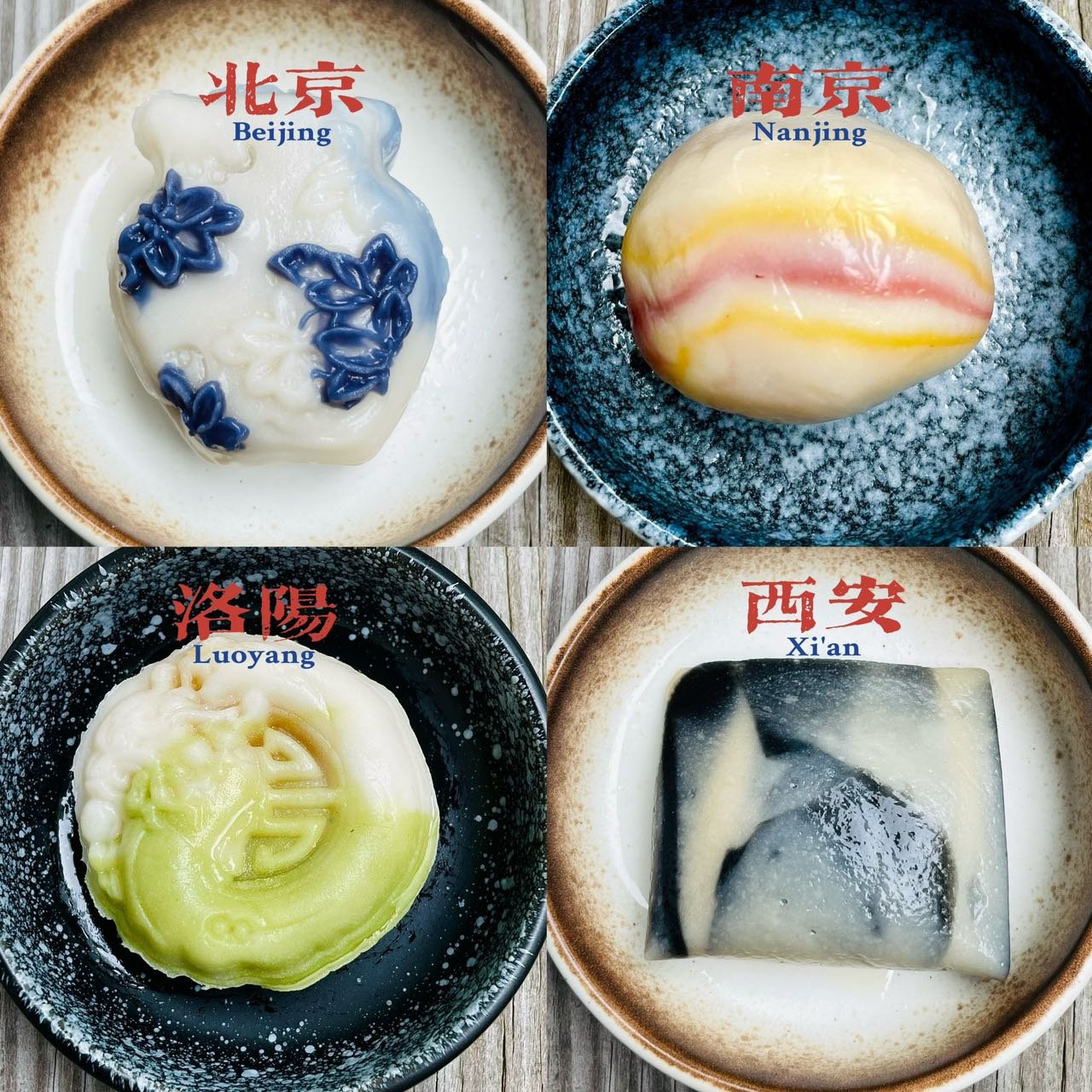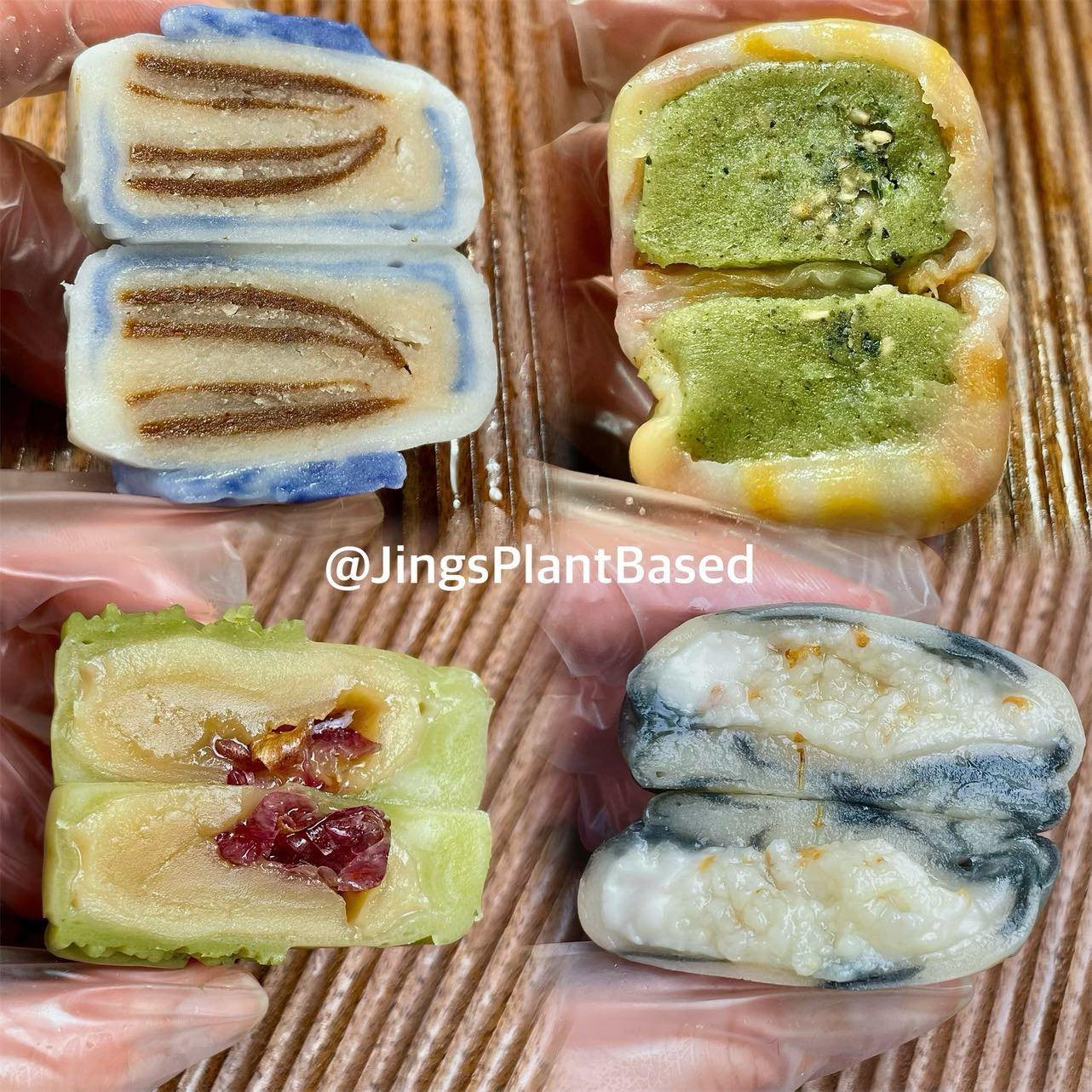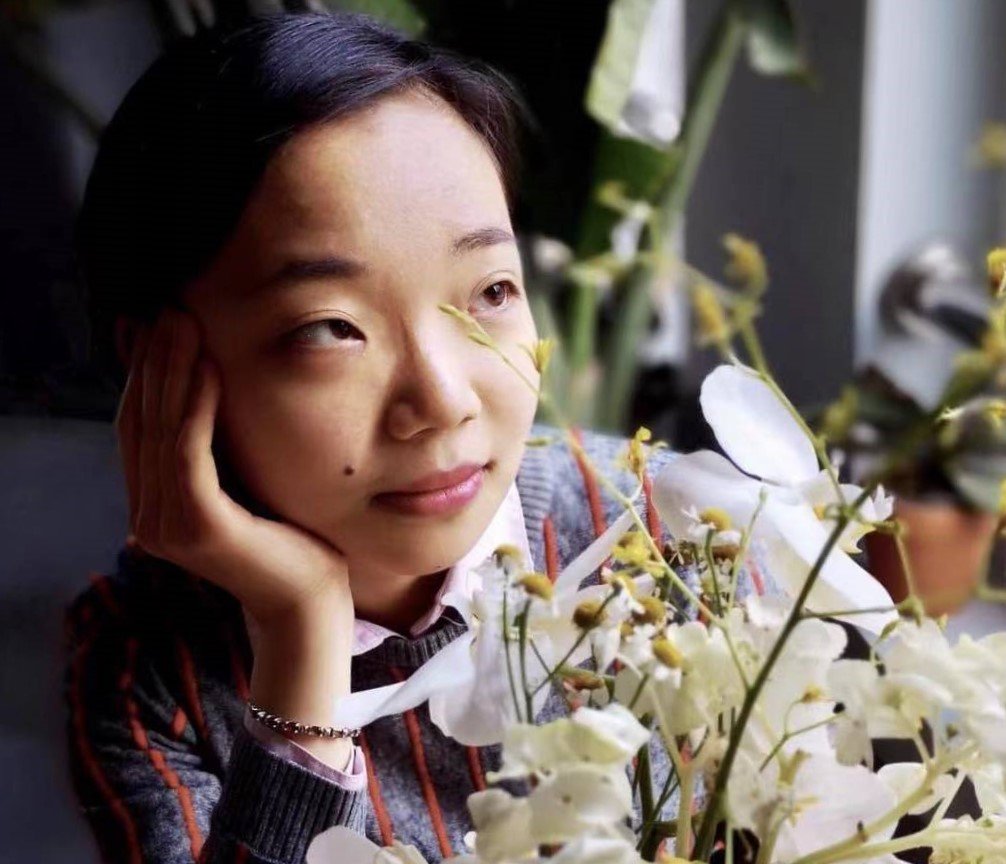THE ELIXIR-POUNDING RABBIT
The Mid-Autumn Festival (中秋節) is just around the corner(!). The Chinese Street Market Community has prepared stories and traditional snacks for the year. We thought it was interesting to mention that this is the year of the rabbit and the rabbit is one of the important mythological creatures in the Mid-Autumn Festival stories. It makes us wonder what the rabbit is doing during this traditional holiday? Why is the rabbit playing an important part? We consulted with our in-house historian Ms. Yuxuan Cai, and we have learned that a toad is also living in the moon! The rabbit is not just making the sticky rice cakes in the bowl but also making the elixir with venom of the toad! Interestingly, toad venom is a traditional Chinese medicine ingredients in real life. It has a very good effect of reducing swelling and detoxifying. For example, toad venom pills combined with musk and cinnabar have the effect of treating carbuncle and malignant sores. So yes, the traditional mooncakes we are preparing this year are going to have lots of rabbit features filled with classic flavors and more. Our guest chef Jing was inspired by the traditional Chinese elements and historical towns from her trip back to China this Summer. Her mooncake designs will involve with the rabbit and dragon patterns from the White and Blue Porcelains, given we are in the year of the rabbit and the rabbit is welcoming the dragon year in 2024. Let’s read what our in-house historian Ms. Yuxuan Cai has to say about the rabbit and the toad in this traditional holiday while enjoy some mooncakes we have prepared for you.
Rabbit in the Moon & Year of the Rabbit
The ancestors of many races of humankind have seen the waning and waxing moon as an emblem of human immortality; among them are the ancient Chinese people, who conceptualised the shade of the moon as divine element where lies the secret. Based on its shape, the shade of the moon has been imagined as a toad, a white rabbit and the shades of a flourishing cassia tree. These are not random picks from the nature; instead, rabbit and toad are regarded as long-living and felicitous creatures in ancient China. Perhaps because of its fertility, rabbit was believed can live up to 1000 years old, and those achieved 500 have white fur, and toad can live up to 300 years old. (「兔,壽千歲,壽滿五百歲者,其毛色白。」「蟾蜍壽三千。」《抱樸子·對俗》) These fantasies, along with the most well-known legend of “Chang’e Flying to the Moon” (嫦娥奔月), took shape independently in China no later than the 4th century BC.
With the development of Taoism during the Han Dynasty (206 BC – 220 AD), the toad, the rabbit and the moon integrated. Combining the philosophical concept of Yin-yang (陰陽, passive-active), the toad and rabbit were explained as the essentials for the making of moonlight:
Why is there a rabbit and a toad in the moon? Moon is of Yin nature; and the toad is of Yang nature, so does the rabbit next to it. As Yin is attached to Yang, there is [moon]light.
月中有兔與蟾蜍何?月,陰也。蟾蜍,陽也。而與兔並,明陰系於陽也。
—— The General Meanings in the Five Classics 《五經通義》(c. 40–6 BC)
Moon is the Spirit of Yin, for it wans. Within it is a toad and a rabbit, so that Yin and Yang are attached, supporting and repressing each other, yielding and compromising to each other. As Yang is bending in the moon, the moonlight looks gentle. Rabbit resembles the active Yang for it runs fast.
月者,陰精,為言闕也。中有蟾蜍與兔者,陰陽兩居相附,托抑詘合。陽結治其內,光炬中氣似文耳。兔善走,象陽動也。.....
—— Interpreting the Spring and Autumn Annals with Prophecies《春秋緯元命苞》 (West Han Dynasty, 206 BC–9 AD)
Correspondingly, as the Han dynasty witnessed an increasing pursuit of immorality in the society, the trio of moon, toad, and rabbit had became a classic component of religious art, especially funerary art. Perhaps the most famous and mysterious presentation is seen in the painting on silk funeral banners draped over the coffin in the grave of Lady Dai in Mawangdui (“Prince Ma’s Mound” Tomb no. 1. / 非衣帛畫,馬王堆一號漢墓. c. 168 BC), Hunan Province. The upper part of the silk painting represents the scene of heaven: on the top left side is the crescent carrying a toad and a white rabbit, on the top right side is the sun housing a golden crow, at the top middle is the mother-god Nüwa (女媧, sometimes also presented as male). [Figure 1] Similarly, the lunar trio by the side of Nüwa is also part of a fresco with the theme of celestial immortality in the Western Han tomb in Qianjingtou, Henan Province (洛陽西郊淺井頭漢墓主室頂, late Western Han Dynasty, ca. 49 B.C.–9 AD). [Figure 2]
The popular fascination with immortality was reflected in the development of Queen Mother of the West (西王母) worship in the Han Dynasty. According to traditions (first recorded systematically in Shanhaijing [“The Classic of Mountains and Seas”]《山海經》, 4 BC), Queen Mother of the West is the famous possessor of the elixir of immortality, its recipe and the magical peaches, both have the power to keep one’s vitality and prevent death. she resides in the Kunlun Mountain (崑崙山) to the south of the west sea, with the Ruo River (弱水) circling around the mountain’s foot.
The Way has its reality and its signs but is without action or form. You can hand it down but you cannot receive it; you can get it but you cannot see it. It is its own source, its own root. Before Heaven and earth existed it was there, firm from ancient times. It gave spirituality to the spirits and to God; it gave birth to Heaven and to earth. It exists beyond the highest point, and yet you cannot call it lofty; it exists beneath the limit of the six directions, and yet you cannot call it deep. It was born before Heaven and earth, and yet you cannot say it has been there for long; it is earlier than the earliest time, and yet you cannot call it old. … The Queen Mother of the West got it and took her seat on Shaokuang — nobody knows her beginning, nobody knows her end.
夫道有情有信,無為無形;可傳而不可受,可得而不可見;自本自根,未有天地,自古以固存;神鬼神帝,生天生地;在太極之先而不為高,在六極之下而不為深,先天地生而不為久,長於上古而不為老。......西王母得之,坐乎少廣,莫知其始,莫知其終。
—— “The Great and Venerable Teacher” in Zhuangzi《莊子·內篇·大宗師》
As the Queen Mother of the West has authority over immortality, it is reasonable that the retinues of the Queen Mother of the West are long-living creatures: a nine-tailed white fox (the tails represent nine lives) is her courier to the temporal world, the three-legged golden crow, the toad and the jade rabbit — the spirits of the sun and the moon —— assist the goddess with her divine functions. Therefore, the court of this goddess is also an important motif in Han funeral art. On the brick paintings that survived from the Han Dynasty, the Jade Rabbit pounding the elixir of immortality is often collocated with the Queen Mother of the West, among other retinues of the goddess. [Figure 3. The Court of Queen Mother of the West, Lintel Painting in the tomb of Tian Fang in Suide, East Han Dynasty 綏德田魴墓門楣畫像, c. 92 AD] Jade Rabbit is the core symbol of the Queen Mother of the West as sometimes other retinues are omitted. [Figure 4. Queen Mother of the West and the Elixir-Pounding Rabbit, Hollow Brick Paintings, 新通橋漢墓,Xintongqiao Han Tomb, c. 9–23 AD] Jade Rabbit’s connection to immortality through the goddess’ court is further confirmed in folklore from the Eastern Han Dynasty:
“What do you want, layman?” asked the immortal retinue from the gate. / “[I] would like to follow the heavenly way, / requesting a prescription to prolong my life.” On the imperial order, the functionaries plucked the young leaves from the twigs of the sacred Ruo trees, with which the Jade Rabbit, kneeing, pounded into a “toad elixir-pill” painstakingly. “Your Majesty, here is [the elixir on] the jade plate. Take this, Your Majesty will achieve immortality.”
傳教出門來。門外人何求所言。欲從聖道。/求一得命延。教敕凡吏受言。/採取神藥若木端。玉兔長跪搗藥蝦蟆丸。/奉上陛下一玉柈。服此藥可得神仙。
——“Ballad of Dong’s Escape,” in Han Yüe-Fu 《漢樂府·董逃行》(c. 192 AD)
From the dual roots of the rabbit worship generate two different formulae of Rabbit in ancient Chinese visual arts: the running rabbit is associated with the moon, symbolising the “active Yang”. On the contrary, the elixir-pounding Jade Rabbit is more frequently found at Queen Mother of the West’s court, standing or kneeling. The former is found in astronomical space, while the latter is found in paradise. In other words, in the Han Dynasty, the depiction of rabbit embodied two iconographical systems. As we’ve discussed in our 2022 Mid-Autumn column article, the elixir-pounding rabbit gradually making its way into the moon after Han Dynasty is parallel to the transformation of the tradition of “Chang’e Flying to the Moon” (嫦娥奔月). Nowadays, the Jade Rabbit pounding elixir in the bright moon is an icon of the Mid-Autumn Festival.
2023 Mid-Autumn Mooncake Collection: Mooncakes & Osmanthus Oolong Tea
Traditional Wheat Dough Mooncake Filled with Classic Flavors and more
To kick off the Mid-Autumn session, we are bringing some of the classic Cantonese-style mooncake fillings with our own interpretation.
Lotus Seed Paste & Salted Egg Yolk (蓮蓉蛋黃)
Handcrafted Taro Paste (奶香芋蓉)
Red Bean Paste & Tangerine Zest (橙皮紅豆沙)
Classic Chinese Candy - The Big White Rabbit Candy Flavor (大白兔奶糖)
Snow Skin Mooncake Collection (GF, V) by Guest Chef Jing
The mooncake selections Jing prepared this year are inspired by her trip back to China in the summer.
The Four Historical Capitals Collection (4 pieces)
• Xi’an ( 西安 ), ink wash painting: Osmanthus infused sweet jiuniang (酒酿, similar to fermented rice pudding) and cheese. The round shape imitates the dessert ruanlao (“soft curd”, curd filled rice dough) from Song Dynasty.
• Luoyang (洛阳), turquoise: Luoyang is known as “the city of Peonies". According to traditions, the peony is demoted to Luoyang for the peony spirit refused to cater Empress Wu Zetian (r. 665–690 AD, Tang Dynasty), who demanded all flowers to blossom in winter for her pleasure. The filling is peony petal jam. The dragon shape celebrates the turquoise-inlaid dragon which was discovered in the archeological excavation site of the imperial palace of Xia Dynasty (c. 2070 – c. 1600 BC) in Erlitou (二里头), near Luoyang.
• Beijing (北京), blue and white porcelain: though Beijing had been the State of Yan’s capital in the early first millennium BC, it is best known for its metropolitan atmosphere during the Yuan Dynasty when blue and white porcelain was invented and exported. The filling is Chinese hawberry, which is the main ingredient for Beijingers’ iconic snack, bingtanghulu (ice sugar-coated Chinese hawberries, 冰糖葫蘆).
• Nanjing (南京), yuhua stone, yuhua tea: yuhua (雨花), in Chinese literally means rain and flowers, is a compliment for things related to Nanjing and has auspicious meaning. Yuhua stones are colourful pebbles, and Yuhua tea is a kind of green tea that brings soft, sweet earthy flavour and delicate aroma. Ruyi (lit. “as you wish,” a curved decorative object in China) shape.
*About snow skin mooncakes: this type of non-baked mooncake originates from Hong Kong in the 1960s and has become popular across China and other Southeast Asian countries. It is always served cold, perfect for early Mid-Autumn Festivals (such as this year) when heat is still lingering. The skin, mainly made of sticky rice flour and rice flour, has a slightly chewy and elastic texture.
Storage & consumption tips: snow skin mooncakes can last in the original packaging or an air-tight container in the freezer (not refrigerator) for up to 2 weeks. Leave out for about 20 minutes to thaw before serving. Refreezing is not advised.
Tea Pairing: the Osmanthus Oolong by Teaism DC
Tea is the loyalist companion to mooncakes and most Chinese desserts. Depending on the flavor of the mooncakes, Chinese choose different teas, as people do dessert and wine pairing in western cuisines. The Osmanthus Oolong by Teaism can go with all our mooncakes, especially the traditional cantonese-styled mooncakes. This batch of oolong tea leaves were dried in a room filled with dry osmanthus flowers. The tea absorbed the aroma into the leaves. You can smell the fragment from the osmanthus flowers while drinking the tea.
Blog prepared and edited by Yuxuan Cai
History Ph.D Candidate at University of Cambridge





